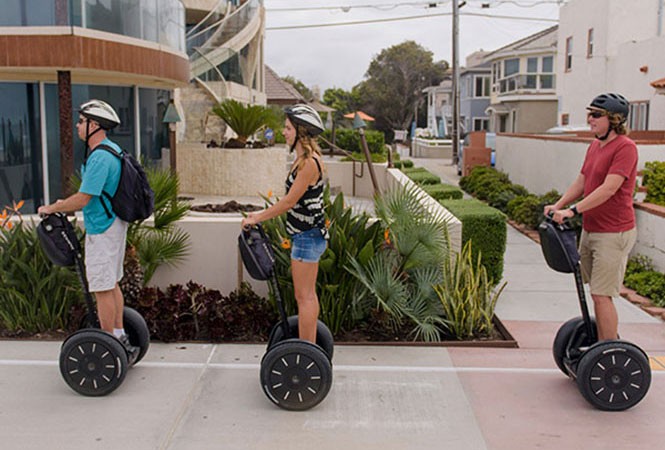
by Elena Gorgan from https://www.autoevolution.com
It’s a sad day for electric two-wheelers: the iconic and often-derided personal transporter Segway, a true pioneer in urban mobility, has come to the end of life. The factory producing the PT will shut down permanently on July 15, 2020.
When it was teased back in 2001, Segway was said to come to replace the car. It would be, they said, what the car was for the horse and buggy, an invention more revolutionizing than the computer itself. The Segway, a two-wheeled personal transporter (they called it human transporter, HT, back then), was more than just a product; it was, in very simple terms, the future.
In many ways, Segway, with its self-balancing technology and versatile functionality, was a trailblazer. It never got to be as popular and commercially successful as inventor Dean Kamen thought (hoped?) it would be, but it was a revolutionary product.
It’s now time to pour one out for the Segway PT, because it’s curtain call. The Bedford, New Hampshire factory that produces it will shut down permanently on July 15, 2020, Fast Company reports. Production on the PT comes to an end, and there are no immediate plans to ever revive the product in another form.
That said, the decision is hardly surprising. For all the new ground the PT broke in terms of urban mobility, it could never attain wide appeal with the public for a very simple reason: it was – and is – too expensive. A PT still costs as much as a used motorcycle, and it only gets a top speed of 12.5 mph (20 kph) and a range of 31 miles (68 km). Considering it boasted a 10 mph (16 kph) top speed back in 2001, it’s hardly made any progress in this regard.
Judy Cai, president of Segway, believes quality also played a part in the low spread of the PT: it was too good to make a profit off, so it’s probably the opposite of what you were thinking. “We tried analyzing, how come sales cannot go up quickly? One reason, I hate to say, is the quality of it, how durable it is,” Cai explains to Fast Company.
“I talk to customers riding [an old] unit. It doesn’t look good because it’s been on the road 12 years. It has 100,000 miles on it. But the machine itself runs very well. And so when you try to sell new units [to those customers].,. unfortunately, it does hurt us,” Cai adds.
This means that, while Segway planned on selling 100,000 units of the self-balancing PT in the first year, it was only able to sell about 140,000 in total, in all these years since launch. Segway found a niche as a fleet vehicle with armed guards, police officers, airport staff and tour guides. As an actual personal vehicle for urban mobility, which is what it aimed to be from the start, it never really caught on.
The PT that could, and a legacy that lives on
Segway had big dreams for its PT in the early ‘00s. When it was rolled out at the end of 2001, with help from inventor Kamen, it was unlike anything else that the world had seen. A two-wheeler that you could control by simply leaning on it, that would be as intuitive as walking is, that would ride upright without toppling over and that could get you cruising down the street several times faster than you could walk – it was all unheard of. The self-balancing tech used for it paved the way for many other products we see today more often than we see a Segway, like hoverboards.
As the years passed and the adoption rate still failed to go up, Kamen sold the company. In 2015, Segway was bought by Chinese giant Ninebot and, today, they command a large portion of the micromobility market, with their electric kickscooters, self-balancing scooters and electric bikes.
While the Segway PT as we’ve known it for almost two decades will no longer be, the Segway name and the brand live on. So does the legacy of Segway, because the technology developed for the PT continues to be used in a variety of products, including in the S-Pod concept revealed earlier this year (basically, still the PT but with a new, chair-type form factor).
